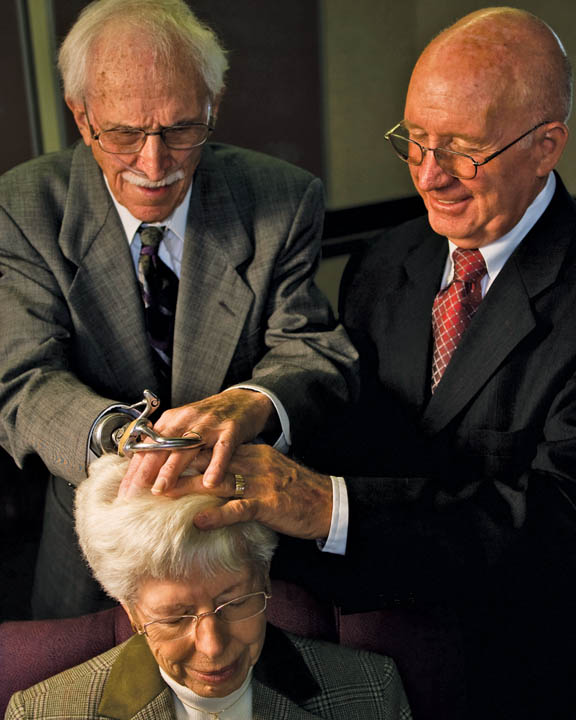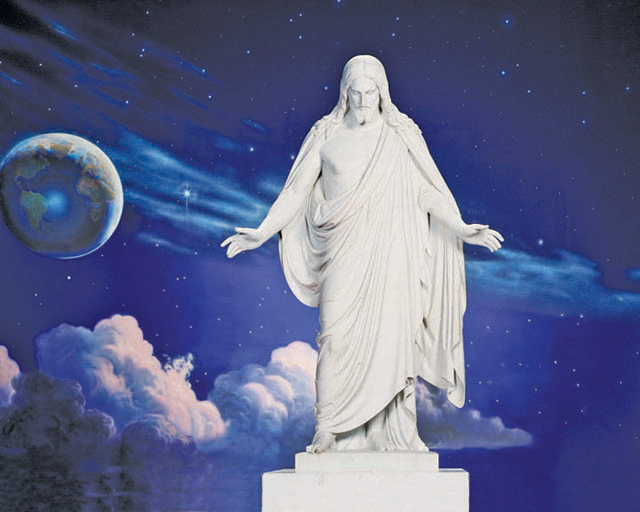The principle of polygamy, the practice of more than one woman being married to the same man, has likely caused the most controversy in the history of The Church of Jesus Christ of Latter-day Saints, also known as the LDS Church or the Mormon Church. Though the practice was instituted for a relatively short period of time, in continues to raise many questions and biases from those who do not fully understand it.
 The most common misconception about polygamy is that it was an excuse for lustful men to satisfy themselves. This is absolutely untrue. In fact, most of those called to live this principle were uncomfortable with it themselves, including Joseph Smith and Brigham Young.
The most common misconception about polygamy is that it was an excuse for lustful men to satisfy themselves. This is absolutely untrue. In fact, most of those called to live this principle were uncomfortable with it themselves, including Joseph Smith and Brigham Young.
Records show that though Joseph likely received revelation on this topic as early as 1831, it was only when Joseph was confronted by an angel who threatened him with destruction, if he did not obey, that Joseph instituted the principle in the latter days as a direct commandment from God. He began preaching the principle to the Quorum of the Twelve Apostles in about 1839. While the Saints were living in Nauvoo from 1839 to 1846, specific people were asked to begin practicing polygamy, but only the prophet had the authority to approve a plural marriage. Said Joseph at this time:
“Gave instructions to try those persons who were preaching, teaching, or practicing the doctrine of plurality of wives: for, according to the law, I hold the keys of this power in the last days; for there is never but one on earth at a time on whom the power and its keys are conferred; and I have constantly said no man shall have but one wife at a time, unless the Lord directs otherwise” (see TPJS 324).
The principle was revealed to Joseph after he questioned the Lord on the occurrences of plural marriage in the Old Testament. Sometimes it was lawful, as with Abraham, and other times it was not, as with David and Bathsheba. The Lord answered Joseph that it was approved when the wives were given by the prophets, but not when the relationships were not given of God:
“David also received many wives and concubines, and also Solomon and Moses my servants, as also many others of my servants, from the beginning of creation until this time; and in nothing did they sin save in those things which they received not of me.
“David’s wives and concubines were given unto him of me, by the hand of Nathan, my servant, and others of the prophets who had the keys of this power; and in none of these things did he sin against me save in the case of Uriah and his wife; and, therefore he hath fallen from his exaltation” (Doctrine and Covenants 132:38, 39).
In the Book of Mormon, a record of God’s dealings with the people of the ancient Americas, the issue is also addressed:
“Wherefore, my brethren, hear me, and hearken to the word of the Lord: For there shall not any man among you have save it be one wife; and concubines he shall have none; For I, the Lord God, delight in the chastity of women. And whoredoms are an abomination before me; thus saith the Lord of Hosts. Wherefore, this people shall keep my commandments, saith the Lord of Hosts, or cursed be the land for their sakes. For if I will, saith the Lord of Hosts, raise up seed unto me, I will command my people; otherwise they shall hearken unto these things” (Jacob 2:27–30).
This teaches us that it is a sin to practice polygamy, unless directly commanded by the Lord. All of Western culture dictated that polygamy was abhorrent, and this belief was also held by the Mormons at this time. It was not an easy principle for them to live, and most remained in monogamous relationships, but those who were commanded to lived according to this principle up until the end of the nineteenth century.
From 1839 to 1852, it was not generally known that Mormons were practicing polygamy. In 1852, however, Brigham Young, the second president of the Church, instructed Orson Pratt to publicly admit polygamy as a practice for the Church. Each marriage still had to be approved, and it was still a minority of Church members who entered into plural marriages, but the practice was now public and almost instantly drew more criticism and persecution to the Church.
Many people still ask today, “Why would plural marriage ever be commanded of God? What would the purpose be?” Though God has never given His full answer to this question, some speculations can be made. As with any commandment, there are often multiple reasons. In this case, reasons could include obedience; to raise up seed unto the Lord, which is the only specific reason He has ever given, (listed in the scripture above); solidifying the Mormons into one group sociologically; and as an Abrahamic test, which the Lord warned the Saints polygamy would be to them.
Because many of the men and women who practiced polygamy did have a hard time with the principle and practiced it solely out of faith, their children could see their parents’ total commitment to their faith and to the Lord. This resulted in generations of strong, faithful Saints passing on their commitment and testimonies to future generations.
However, the idea of polygamy was treated with repugnance by the rest of the nation, and both local and national governments urged the passing of laws to make it illegal. The Morrill Act of 1862, which was actually intended to promote the teaching of agricultural and mechanic arts, made the practice of polygamy and bigamy illegal in all U.S. territories, but it was not until the Poland Act of 1874 that there was a feasible way to charge a person with the crime. Adultery and fornication were also eventually made illegal, but, though it was common for men to have mistresses at this time, the only people ever tried for these crimes were Mormons. Mormons only cohabited with those they had been married to, but because others did not recognize these marriages as legal, Mormons were charged with adultery.
 Under intense pressure and persecution, Mormons continued living this commandment, because they respected the commandments of the Lord more than they feared the judgment and persecution of man. Many men who were practicing polygamy were forced into hiding because they were being compelled to cut off all communication with all but one of their wives; this included financial support. Rather than abandon their families, which they felt they morally could not do, some families fled together. Motions went to Congress in May of 1890 to bar all Mormons from voting or holding public office. The government was also threatening to seize all Church property.
Under intense pressure and persecution, Mormons continued living this commandment, because they respected the commandments of the Lord more than they feared the judgment and persecution of man. Many men who were practicing polygamy were forced into hiding because they were being compelled to cut off all communication with all but one of their wives; this included financial support. Rather than abandon their families, which they felt they morally could not do, some families fled together. Motions went to Congress in May of 1890 to bar all Mormons from voting or holding public office. The government was also threatening to seize all Church property.
Wilford Woodruff, the fourth president of the Church, turned to the Lord several times in prayer and anguish over the matter, but the command was not given to repeal the practice until September 1890. President Woodruff was shown a vision of what would happen to the Church and its members if polygamy continued; it would be essentially destroyed. The Lord revealed to President Woodruff that the time had come to end the practice of polygamy, and the First Manifesto was the result. Those who had already entered into plural marriages were permitted to continue those relationships. A few more plural marriages were performed in the following years, however, and in 1904, the fifth president of the Church, Joseph F. Smith, issued the Second Manifesto, declaring that anyone who entered into a plural marriage would be excommunicated from the Church.
Persecution eventually subsided; Mormons were permitted to vote and hold public office, and Utah eventually was admitted as a state. There were some who refused to cease the practice of polygamy, however, and they were eventually excommunicated. Any persons who practice this principle today are in no way affiliated with The Church of Jesus Christ of Latter-day Saints.
President Gordon B. Hinckley stated the following about polygamy in the Church’s October 1998 general conference:
“I wish to state categorically that this Church has nothing whatever to do with those practicing polygamy. They are not members of this Church. Most of them have never been members. They are in violation of the civil law. They know they are in violation of the law. They are subject to its penalties. The Church, of course, has no jurisdiction whatever in this matter.
“If any of our members are found to be practicing plural marriage, they are excommunicated, the most serious penalty the Church can impose. Not only are those so involved in direct violation of the civil law, they are in violation of the law of this Church. An article of our faith is binding upon us. It states, ‘We believe in being subject to kings, presidents, rulers, and magistrates, in obeying, honoring, and sustaining the law’ (Articles of Faith 1:12).”
Those groups which practice polygamy and claim they are also Mormons are members of fundamentalist groups not connected with The Church of Jesus Christ of Latter-day Saints. This understandably causes confusion, but the Church does not condone the actions of these people; nor are these people members of the Church.
For more information on the history of polygamy in The Church of Jesus Christ of Latter-day Saints, please visit mormon-polygamy.org.





Trackbacks/Pingbacks